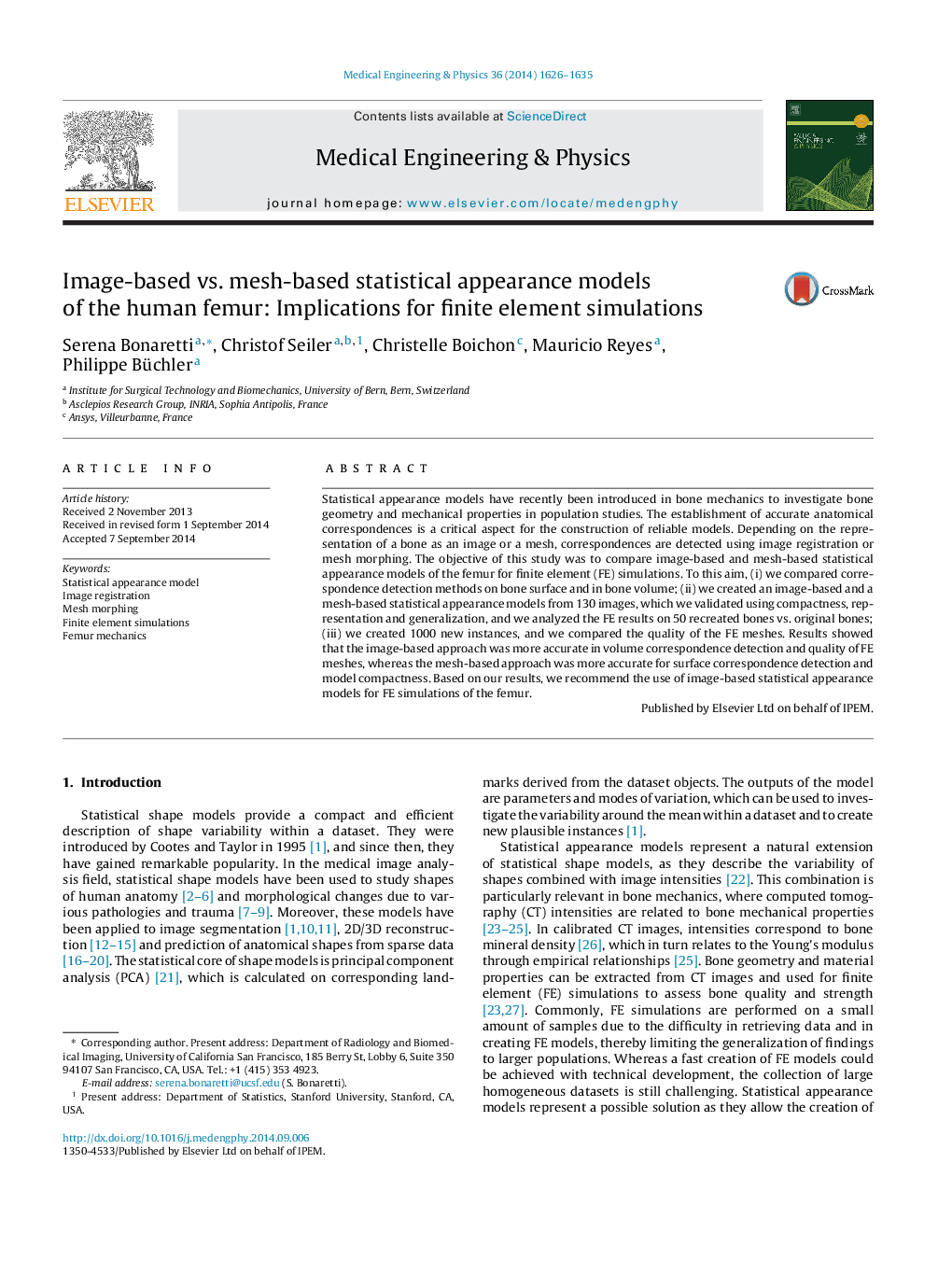| Article ID | Journal | Published Year | Pages | File Type |
|---|---|---|---|---|
| 875834 | Medical Engineering & Physics | 2014 | 10 Pages |
Statistical appearance models have recently been introduced in bone mechanics to investigate bone geometry and mechanical properties in population studies. The establishment of accurate anatomical correspondences is a critical aspect for the construction of reliable models. Depending on the representation of a bone as an image or a mesh, correspondences are detected using image registration or mesh morphing. The objective of this study was to compare image-based and mesh-based statistical appearance models of the femur for finite element (FE) simulations. To this aim, (i) we compared correspondence detection methods on bone surface and in bone volume; (ii) we created an image-based and a mesh-based statistical appearance models from 130 images, which we validated using compactness, representation and generalization, and we analyzed the FE results on 50 recreated bones vs. original bones; (iii) we created 1000 new instances, and we compared the quality of the FE meshes. Results showed that the image-based approach was more accurate in volume correspondence detection and quality of FE meshes, whereas the mesh-based approach was more accurate for surface correspondence detection and model compactness. Based on our results, we recommend the use of image-based statistical appearance models for FE simulations of the femur.
